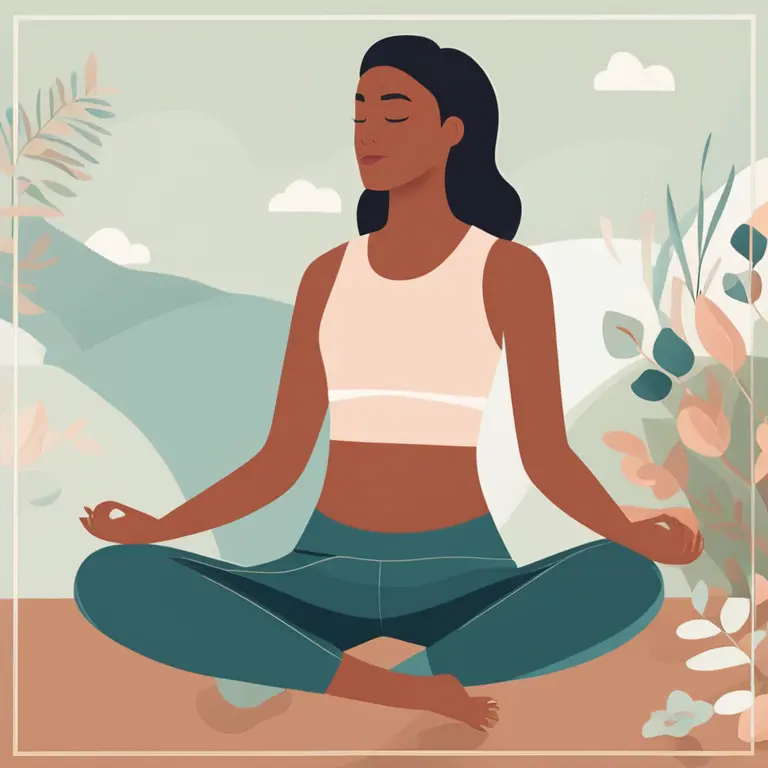
Soothing the Mind: Meditation for Anxiety Relief
Discover effective meditation techniques to alleviate anxiety and foster a sense of calm in our comprehensive guide for tranquility seekers.
article by Hina Kurosawa
A Modern Approach to Ancient Practices
Meditation isn't a new trend; it is an ancient practice that has been revisited and refined for the modern world's unique challenges, particularly anxiety. As our lives become increasingly complex, the necessity for effective mental health strategies becomes more apparent. The efficacy of meditation in reducing stress and anxiety is now supported by a growing body of scientific research. As we step into 2024, these meditation practices have been adapted for contemporary lifestyles, making them more accessible and relevant to today's anxiety-related issues.

Understanding Anxiety's Grip
Before diving into meditation techniques, it's important to recognize anxiety as a common, yet serious issue affecting millions globally. With the advancing digital age, concerns about privacy, online identity, and a constant influx of global news can contribute to heightened anxiety levels. Meditation offers a way to step back from the digital whirlwind and reconnect with our inner sense of peace. This article aims to offer soothing strategies that acknowledge the specific anxieties of our current era.

Starting with Breathing Techniques
Breath is the cornerstone of meditation for anxiety. Techniques like diaphragmatic breathing, also known as belly breathing, encourage full oxygen exchange and can reduce the body's 'fight-or-flight' response, promoting relaxation. The "4-7-8" method, involving breathing in for 4 seconds, holding for 7, and exhaling for 8, is gaining popularity for its simplicity and effectiveness in inducing calm, and can be easily implemented anywhere and anytime anxiety strikes.

Mindfulness Meditation
Mindfulness has become a buzzword, and for good reason. This form of meditation encourages practitioners to observe their present thoughts and feelings without judgment. By bringing awareness to what is happening in the moment, mindfulness meditation can create a sense of distance from distressing thoughts, allowing individuals to respond to anxiety with more clarity and less fear. Apps and virtual reality experiences have further tailored mindfulness for the tech-savvy meditator of 2024.

Body Scan Meditation
The body scan is another powerful technique where attention is gradually moved through different parts of the body, noting sensations without judgment. By fostering a connection between mind and body, participants can often find a release for pent-up anxiety. In an age where we are often disconnected from our physical selves, due to prolonged periods of screen time or sedentary jobs, the body scan offers a rejuvenating respite.
Guided Visualizations
For those who find it difficult to meditate alone, guided visualizations offer a narrative journey that can reduce anxiety by shifting focus from worries to calming scenarios. Guided visualizations have been revolutionized by immersive audio-visual platforms which provide a sanctuary from the stress of modern living, allowing individuals to transport themselves to serene natural environments or calming spaces at the touch of a button.
Yoga Nidra and Deep Relaxation
Yoga Nidra, or "yogic sleep," is a state of consciousness between waking and sleeping, induced by a guided meditation that has become widely available through various wellness apps and online platforms. This deep relaxation technique has significant potential for easing anxiety by systematically reducing tension throughout the body and mind, providing practitioners with a deeply restorative experience.
Published: 1/14/2024
Modified: 1/15/2024
More predictions
Come back here soon to learn more about yourself and your future


Healing Through Mindfulness: Meditation & Trauma Recovery
Mindfulness meditation offers a powerful tool for individuals seeking solace and healing from traumatic experiences. Discover how this practice can aid in the journey towards inner peace.


Easing Loneliness with Mindfulness Meditation
Explore how mindfulness meditation can provide solace and connection to alleviate the feelings of loneliness.


Mindfulness Meditation Basics for First Graders
Introducing foundational mindfulness meditation practices to instill calm and focus in first-grade students.